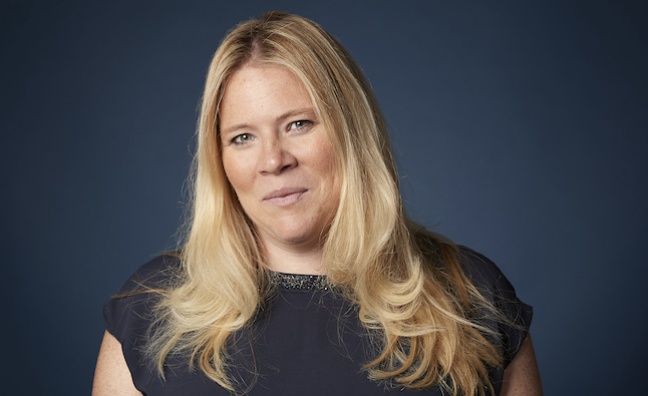PPL has published its 2023 gender and ethnicity staffing data.
Mean pay gaps – the average difference in pay – decreased for both gender and ethnicity between April 2022 and April 2023.
The company’s senior leadership team – executive directors and heads of department – is just above gender parity, at 51% female.
Gender pay data
The mean gender pay gap decreased to 5.4% in favour of men, from 11.7% in 2022. If CEO pay is excluded from the calculations, the mean gender pay gap is reduced to 0.3% in favour of men, compared to 5.7% on the same basis in 2022. PPL has a near equal number of men and women (49% and 51% respectively) in the company’s senior leadership team.
The median gender pay gap has also decreased since the last reporting period, to 12.5% in favour of men, from 13.6%. A heavier male skew further down the organisation at manager level causes the median gap (12.5%) to be higher than the mean (5.4%).
The proportion of male and female employees who received a bonus for work in 2022 (paid in March 2023) was 87.3% and 83.1% respectively.
Payment of this bonus saw the mean gender bonus gap increase to 39.9% in favour of men, from 34.2% in 2022. This gap is reduced to 16.4% in favour of men if the CEO is excluded from figures (compared to 8.1% on the same basis in 2022).
The median gender bonus gap in 2023 was 26.3% in favour of men – a reduction from 30.8% last year.
Ethnicity data
The proportion of staff who declare as ethnicities other than white has increased by three percentage points since the April 2022 reporting period, now at 30%.
In April 2023, people declaring any ethnicity other than white made up 30% of PPL’s workforce, compared to 27% in 2022. The 2023 figure rises to 35% in the lower-earning half of the organisation.
As of April 2023, PPL’s mean ethnicity pay gap decreased to 30% in favour of white employees, from 39.8% in April 2022, and would drop to 26.8% if CEO base pay were excluded. The gap, while narrowing, remains because the proportion of employees of non-white ethnicity is higher in the lower earning half of the workforce.
The median ethnicity pay gap increased to 23.6% in favour of white employees, up from 17% in 2022. PPL said this reflects the higher proportion of white employees in the upper half of the organisation (76%) than in the lower half (57.6%). The proportion of non-white employees in the upper-mid quartile has also fallen.
The company’s mean ethnicity bonus gap is 20.7% in favour of white employees, compared to 18.3% in 2022. Its median ethnicity bonus gap is 10.4% in favour of white employees, compared to 9.1% in 2022.
The percentage of people eligible for a bonus fluctuates from year to year. While the numbers of non-white employees are steadily increasing, the lower percentage of non-white employees receiving a bonus is likely to remain due to the effect of start date on eligibility criteria. Over time, as PPL’s overall ethnicity targets are met, the company expects to see these figures equalising.
Despite currently having fewer than 250 employees – the level which would trigger a formal requirement to publish gender pay data – PPL chooses to publish both gender and ethnicity data voluntarily, as part of its goal of becoming a more diverse and transparent company. It first published annual gender pay gap data in 2017, and added ethnicity pay gap data in 2021. There is no legal requirement for any company to publish staff ethnicity data.
The company has a long-term commitment to equity, diversity, and inclusion (EDI). As part of this, PPL has adapted recruitment methods, ensured interview panels are balanced, and invested in staff training.
PPL’s approach to delivering fundamental change was formalised last year in a five-year EDI strategy, which sets priorities and clear targets for change. The company was one of the first organisations in the music industry to publish an EDI strategy. Initiatives and outcomes so far include:
- Developing the next generation of female executives by partnering with The Cat’s Mother
- Engaging with young people from low-income backgrounds through Mentivity, an award-winning mentoring and alternative education provider
- Creating opportunities for people with disabilities thanks to a partnership with disability charity Leonard Cheshire
The 2027 target set out in PPL’s EDI strategy is for a 50-50 split between men and women. As of April 2023, PPL’s workforce was 62% male and 38% female. Since the last reporting period, the gender pay gap has shrunk across both the mean and the median measures.
Kate Reilly, chief membership and people officer at PPL, said: “At PPL, we are very proud of the work we’re doing to contribute to a fairer, more diverse industry. Releasing these figures, which show further overall progress towards our targets, positions us among the industry leaders on this issue – we are one of a very limited number of our peers in the music ecosystem to publish colleague ethnicity data.
“Striving to become an ever more equitable and inclusive company is not only the right thing to do, but it is also good for business; PPL is stronger for better reflecting our membership and society at large. Although we are continuing to do everything in our power to make PPL a fair, welcoming place to all, we know there are no short-term fixes. Over the coming years, we will further develop our diversity throughout all levels of the organisation.”









